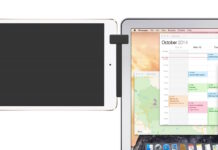 Long-rumored to be set for the $1000 price point, the iPad was either going to be an evolutionary device built upon the framework of the iPhone and iPod Touch, or a regressive, stripped-down tablet version of a MacBook. Once the rumors began that the device would run a version of the iPhone OS, it became apparent that the hardware would certainly be the former. Thankfully, those rumors were confirmed at today’s Apple event held at the Yerba Buena Center for the Arts in San Francisco.
Long-rumored to be set for the $1000 price point, the iPad was either going to be an evolutionary device built upon the framework of the iPhone and iPod Touch, or a regressive, stripped-down tablet version of a MacBook. Once the rumors began that the device would run a version of the iPhone OS, it became apparent that the hardware would certainly be the former. Thankfully, those rumors were confirmed at today’s Apple event held at the Yerba Buena Center for the Arts in San Francisco.
The simple description of the iPad hardware is that it resembles an oversized iPod Touch with more width to it while only slightly thicker (.17”), an incredible feat of design in itself. The iPad is 9.56” h x 7.47” w x .5” d and weighs in at a light 1.5 pounds (1.6 pounds with 3G modem). The black border around the screen is perfectly designed for holding it without unnecessarily invading the viewable screen. The brushed aluminum back is standard, familiar Apple design.
When powered on it is a stunning piece of technology. Driving iPhone OS 3.2 is Apple’s own 1 GHz A4 chip, “a custom-designed, high-performance, low-power system-on-a-chip”, per Apple’s tech sheet. This chip enables the iPad to display 1024×768 HD video resolution at 132 pixels per inch. The device also supports video out, though it does not support any HD output. As should be expected with any device from Apple, a wide array of audio and video codecs are supported. To store all the content Apple wants to sell to you for use on the iPad, there are three different flash drives available for the device: 16GB, 32GB, or 64GB.
All models of the iPad come with built-in WiFi, with support for 802.11 a/b/g/n. Additionally, for a premium of $130 the iPad is available with a 3G modem supporting UMTS/HSDPA and GSM/EDGE for areas where 3G is unavailable. As with the iPhone and iPod Touch, the iPad also sports Bluetooth 2.1 + EDR technology. Rounding out the tech specs are the now-ubiquitous accelerometer, a 3.5 mm stereo headphone jack, ambient light sensor and a lithium-polymer battery that supposedly provides up to 10 hours of usage and up to 30 days of stand-by time.
The iPad is priced well below the $1000 price point that had long been predicted. Here is the complete pricing breakdown:
After all of those features and the great pricing it is a bit easy to forget that there are some significant hardware features missing. There is no SD card slot and no USB or Firewire port, but perhaps the most significant missing piece that seems like a no-brainer is an iSight camera. How it did not make it into the final hardware spec is beyond imagining; it would be a cheap, small, and light piece of hardware to add and would instantly increase the iPad’s usability three-fold. Perhaps this is just typical Apple iterative hardware release scheduling at work, i.e. we will see a next generation iPad with iSight, but it certainly is puzzling.
Of course the final analysis of the iPad product cannot be made until it has been released to the public and has had time to germinate in the real world. The hardware specs certainly support the possibility that this is a revolutionary product, but whether the iPad becomes the next “it” gadget for Apple or not will rely more importantly on the next OS release and, most importantly, application development.
[via engadget]






